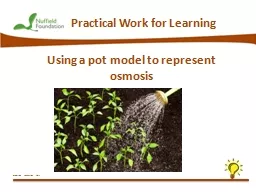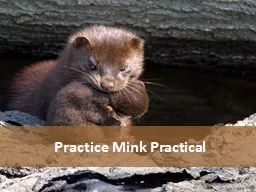PPT-Practical Work for Learning
Author : min-jolicoeur | Published Date : 2018-12-16
Using a pot model to represent osmosis Plants and water Plants take up water through their roots from the soil But how does this happen Learning outcomes You
Presentation Embed Code
Download Presentation
Download Presentation The PPT/PDF document "Practical Work for Learning" is the property of its rightful owner. Permission is granted to download and print the materials on this website for personal, non-commercial use only, and to display it on your personal computer provided you do not modify the materials and that you retain all copyright notices contained in the materials. By downloading content from our website, you accept the terms of this agreement.
Practical Work for Learning: Transcript
Download Rules Of Document
"Practical Work for Learning"The content belongs to its owner. You may download and print it for personal use, without modification, and keep all copyright notices. By downloading, you agree to these terms.
Related Documents














